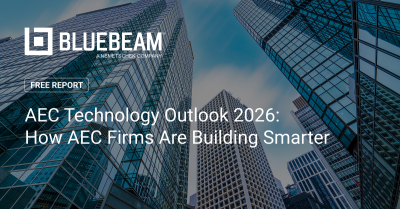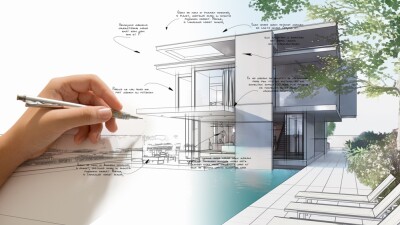For the business world, the last couple of years has been defined by the boom around artificial intelligence. While some forms of this tool – and related innovations like machine learning and computer vision that have effectively been brought under the AI umbrella in mainstream conversations – have long existed, the emergence of large-language models (LLMs) like ChatGPT have captured the minds of people around the world, both positively and negatively. From conversations around how traditional workflows can be flipped on their heads, to worker concerns about being replaced by these tools, to tangential conversations like the ones around how to provide the necessary power for the systems, and much more.
The AEC industry that is responsible for building up and maintaining our built environment has been one of the many sectors to jump head-first into the use of AI. While these professionals have long had a reputation for not adopting new technologies, this boom has flipped that narrative as firms have quickly searched for ways that AI can help their day-to-day operations. Even with all of this adoption, however, we are still in early days and the industry as a whole is in the process of figuring out what works, what doesn’t, and what will ultimately be the best use of these tools.
Earlier this month, global AEC consultancy Arup released a report highlighting how the built environment is already being affected by artificial intelligence, and where firms see this trend moving in the future. The report consists of insights gathered from a poll of 5,000 professionals that work within this industry, all being either a city/urban planner, an architect, an engineer, or a digital officer at manager-level or above. The respondents were evenly distributed with 500 professionals from each of the following countries: U.S., U.K., Australia, Nigeria, Germany, China, Singapore, Brazil, India, Indonesia. Interested readers can check out the full report to see how respondents from any of these specific nations answered, but below we will focus on some of the broader findings.
The report, Embracing AI: Reshaping today’s cities and built environment, indicates at a high level that AI is in heavy usage across the industry, with over 40 percent of respondents noting that they use LLMs, the most used type of artificial intelligence according to the poll. More broadly, 85 percent of the respondents say that are excited about the growing use of AI in their sector, and less than two percent indicated they use these tools no more than once a year, with 36 percent saying they are daily users.
This survey makes it abundantly clear that these adopters are already seeing benefits from their use of AI. Right now, they are mostly using these tools to support decision making, for design work, and project management and risk assessment. Over the next decade, they see AI helping to ease decision-making, allowing for more creative work, and providing new business models or partnerships as the most likely ways in which the sector will be impacted.
Getting back to the use cases, though, 25 percent of respondents say they are currently using AI for enhancing sustainability and energy efficiency, which is always an interesting topic in this discussion. We’ve mentioned this before, but it’s worth repeating: While it’s not difficult to envision how AI can be used to do things like more accurately estimate supply needs, limit returns to sites, and more, it also takes a tremendous amount of energy to run the current systems. This needs to be mentioned any time this conversation comes up, and to be fair, nearly a quarter of respondents did say that an increase in carbon emissions for the sector will be the most consequential way AI will impact the industry in the next decade.
Sustainability isn’t the only hot-button topic from this report, though. Respondents also pointed out a lack of data quality and availability as the biggest barrier for the built environment sector adopting AI today. Concerns around safety and ethics were also a big topic, with a bit over a third of respondents mentioning that as a return. In fact, nearly every respondent – 91 percent, to be exact – said that they believe the built environment sector should have its own ethical guidelines and regulations for AI. Given how closely the sector works with government agencies, this is an unsurprising but still important response.
This whole report is worth the read, as we have just scratched the surface of what is included throughout. As mentioned above, they break out how responses were spread out across individual nations, showing that not every part of the world is in lock-step concerning how they are thinking about AI. They also include some real-world case studies about how AI is being used in the sector, including examples of cities dealing with changing climates, infrastructure projects, and more. This is a topic that is not going away any time soon, and this is a great snapshot of where things stand today in one of the world’s most important sectors.






